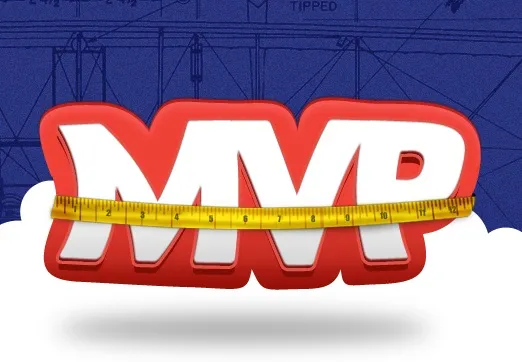The Minimum Viable Product (MVP) Trap

Before your read this post, I suggest you go over to Hacker Street India and glance through this thread – How much time it took for the first version (MVP) of your product!
If you don’t know much about MVP, glimpse quickly through the Wikipedia post on – Minimum Viable Product. The definition: “The minimum viable product is that version of a new product which allows a team to collect the maximum amount of validated learning about customers with the least effort.”
There is much ambiguity in this definition. Lot of judgement is required by the startup founders to define what exactly is MVP version for their product since there are no bullet points to clearly define that. That exactly is a MVP trap!
If you were to build a Social Networking site today, the benchmark for minimum viable product is Facebook. A user will expect all existing features of Facebook to be in your product! For a email service the benchmark is Gmail. For a mobile phone messaging app it is WhatsApp. For a social QnA product it is Quora. For a crowd-funding platform it is Kickstarter. For a phone operating system it is Android / iOS. For search it is Google. For a tablet device it is the Apple iPad.
Early adopters loved the first version of Gmail because it was so much better (and fast) than existing products – Yahoo / Hotmail. They loved the first version of iPhone because it was much better (and usable) than Nokia or Blackberry or Palm then available. On other hand, Bing did not see a great adoption because it was another search engine with no compelling reason for users to switch from Google. Similarly, early adopters saw Microsoft Windows Phone as a different OS for mobile which did all that a Android / iOS phone did differently (different but not better).
If the idea of MVP is showing the product to early adopters and collecting quick feedback, most of that consumer feedback will be based on their comparisons with other products they use on an ongoing basis. To create a wow factor and a compelling reason for users to switch to your product, the minimum viable product you roll out should basically not just exceed current market standards but should also be much better than current offerings.
Otherwise MVP is a trap. Getting a so called minimum viable product (defined by yourself) out in 30 days makes no sense. Every product is different. No product was successful cause its minimum viable product was out in 30 days. You can boast about how quickly you rolled it out, collect feedback from users / customers (most of this feedback is predictable and chances are you would already know about it) and keep building features. Define MVP as not something you can roll out fast, but something that is more valuable than existing product. MVP should not mean Minimum Viable Product. MVP = More Valuable product!
This is also true for service companies. If you are building an ecommerce company today in India, customers would expect not just similar online transaction experience but also the same level of reliability in logistics or customer support as provided by Flipkart or HomeShop18.
Is there a way out of this? Yes – build really innovating products that don’t have existing benchmarks so you can define one yourself and for others to follow. Or build products in a domain were market leaders are yet to be established.
To succeed, you have to build a better product than one available in the market or innovate and build something that does not exist already! Post that stage you can – Build. Ship. Market. Learn. Build. Let the cycle go on.
Remember, the bar for Minimum Viable Product / Service is very high!
Disclaimer: The views expressed in the column belongs to the author. Pravin writes about Product Management & Trends on BeingPractical. He can be reached on Twitter at @beingpractical.






